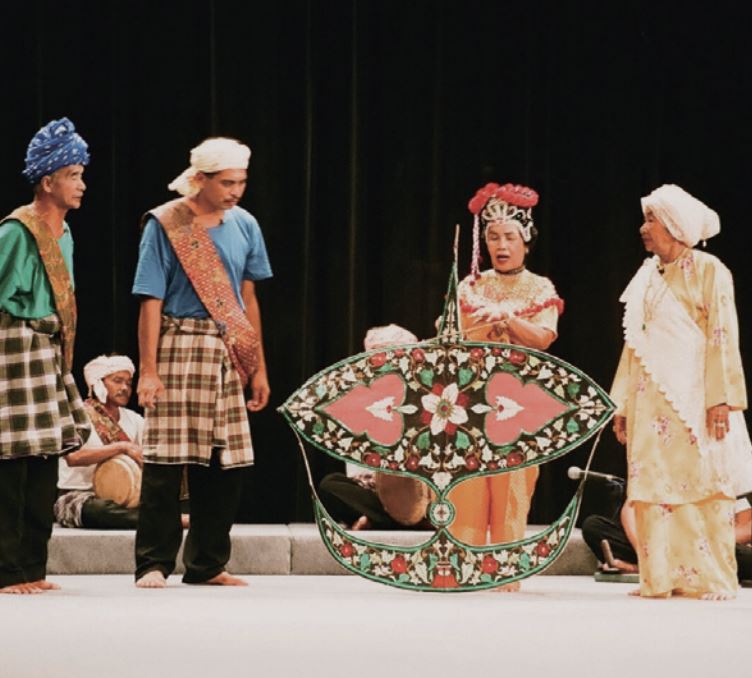As the sun sets in Malaysia, vibrant sounds of traditional music and dance fill the air, heralding the start of a Mak Yong performance. This ancient performing art form has its roots in the Malay communities of northwest Malaysia, with an estimated history of at least eight centuries. Recognized as a UNESCO Masterpiece of the Oral and Intangible Heritage of Humanity in 2005, Mak Yong stands as a testament to the country's cultural identity and its commitment to preserving its rich heritage.
A Mak Yong performance begins with a sacred ritual known as mengadap rebab, an elaborate dance sequence paying homage to the rebab, a three-stringed fiddle. This ritual sets the spiritual tone for the performance, emphasizing the importance of connecting with the spiritual world and achieving healing through song and dance.
A Multidisciplinary Art Form Rooted in Tradition
Mak Yong is not just a dance performance; it encompasses music, theater, and storytelling. Performers don elaborate costumes and perform complex movements, often representing legendary figures such as gods and kings. Traditionally, women play most roles, including the lead role of pak yong, while male performers take on the roles of clowns.
The art form's roots in animism and shamanism are evident in its symbolism and connection to healing rituals. Performers weave together music and dance to tell stories passed down through generations, touching on themes of prosperity, fertility, and gratitude.
Bringing Mak Yong to the Stage
Mak Yong performances typically begin around 9 p.m. and last until midnight. They are held on stages made from trees and coconut leaves in open spaces within villages. The audience sits around three sides of the stage, while the fourth side is reserved for the musicians. The orchestra is relatively small, primarily consisting of a rebab, a gendang (double-sided percussion instrument), and tetawak (gongs), with occasional inclusion of serunai (flute), keduk (drums), and kesi (cymbals).
The lead performer, pak yong, is dressed like a sultan and traditionally played by a woman. The second performer plays the role of the queen, while supporting characters include clowns (peran), female assistants (inang), as well as deities, spirits, monsters, giants, and animals. Between chapters, a group of performers known as jong dongdang entertains the audience with song and dance to mark transitions in the narrative.
Challenges and Hopes for the Future
Despite its cultural significance, Mak Yong faces challenges in preserving its traditions. Modernization and shifting interests among younger generations have led to a decline in experienced performers. The strict training required to master the art discourages some from pursuing Mak Yong.
However, there is hope for the future. Initiatives are underway to establish permanent training and performance facilities in Kelantan, Terengganu, and Kuala Lumpur, aiming to nurture new talent and keep the tradition alive.
Mak Yong's Recognition as Intangible Heritage of Humanity
Mak Yong's inscription on UNESCO's Representative List of the Intangible Cultural Heritage of Humanity in 2008 has helped raise awareness of its importance. International cooperation is playing a vital role in safeguarding this cultural heritage.
As Malaysia works to protect and promote Mak Yong, the performance art form remains a living embodiment of the nation's cultural heritage. Its enduring beauty and adaptability promise to captivate audiences for years to come, weaving a vibrant thread into the rich tapestry of Malaysia's identity.
This article is part of our ongoing coverage of intangible cultural heritages around the world.
April 17, 2024. Contributed by Publisher & Editor Dr. Seong-Yong Park.
Mak Yong Traditional Performance. Photo by A. Ghafar Bin Ahmad.
The pivotal moment of Mak Yong Theater: the Mengadap Rebab Dance. Photo by A. Ghafar Bin Ahmad.
A performer in elaborate costumes brings the Malaysian oral tradition to life. Photo by A. Ghafar Bin Ahmad.